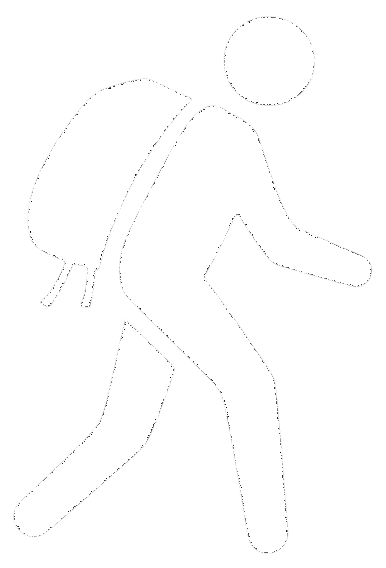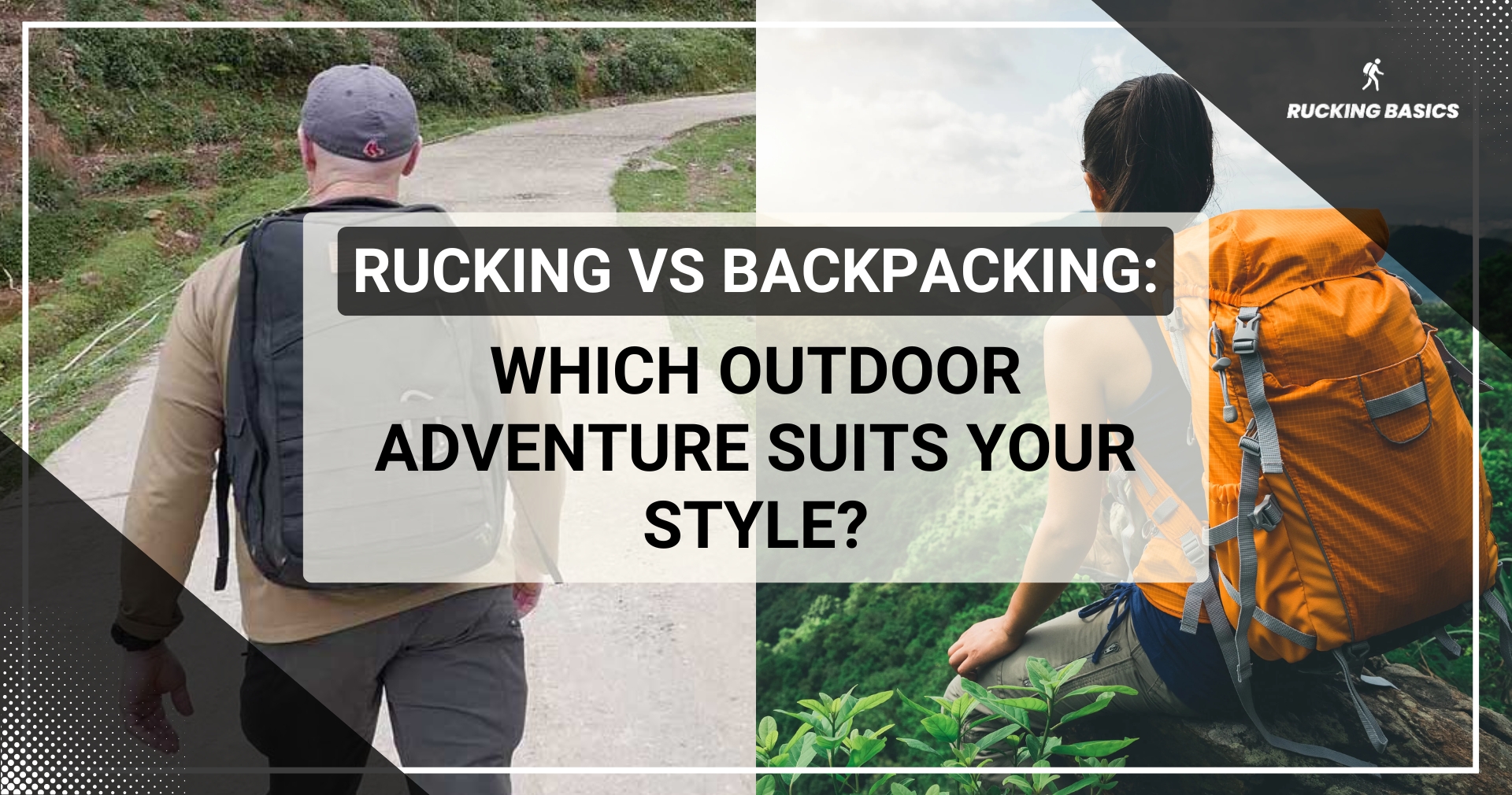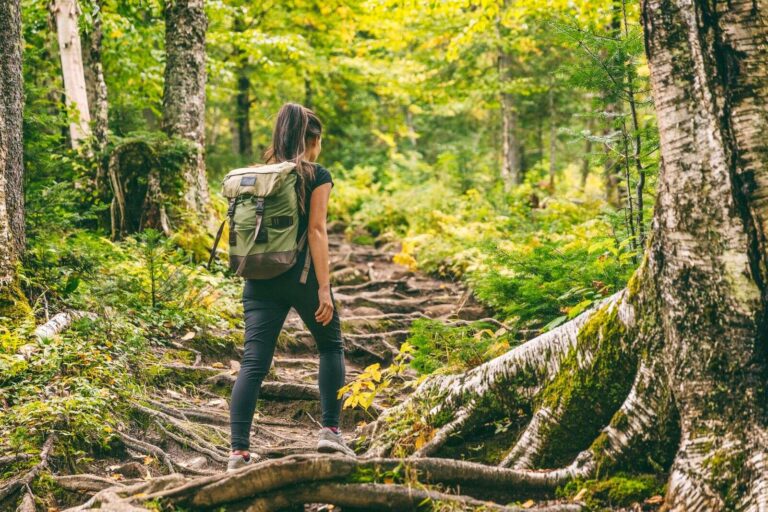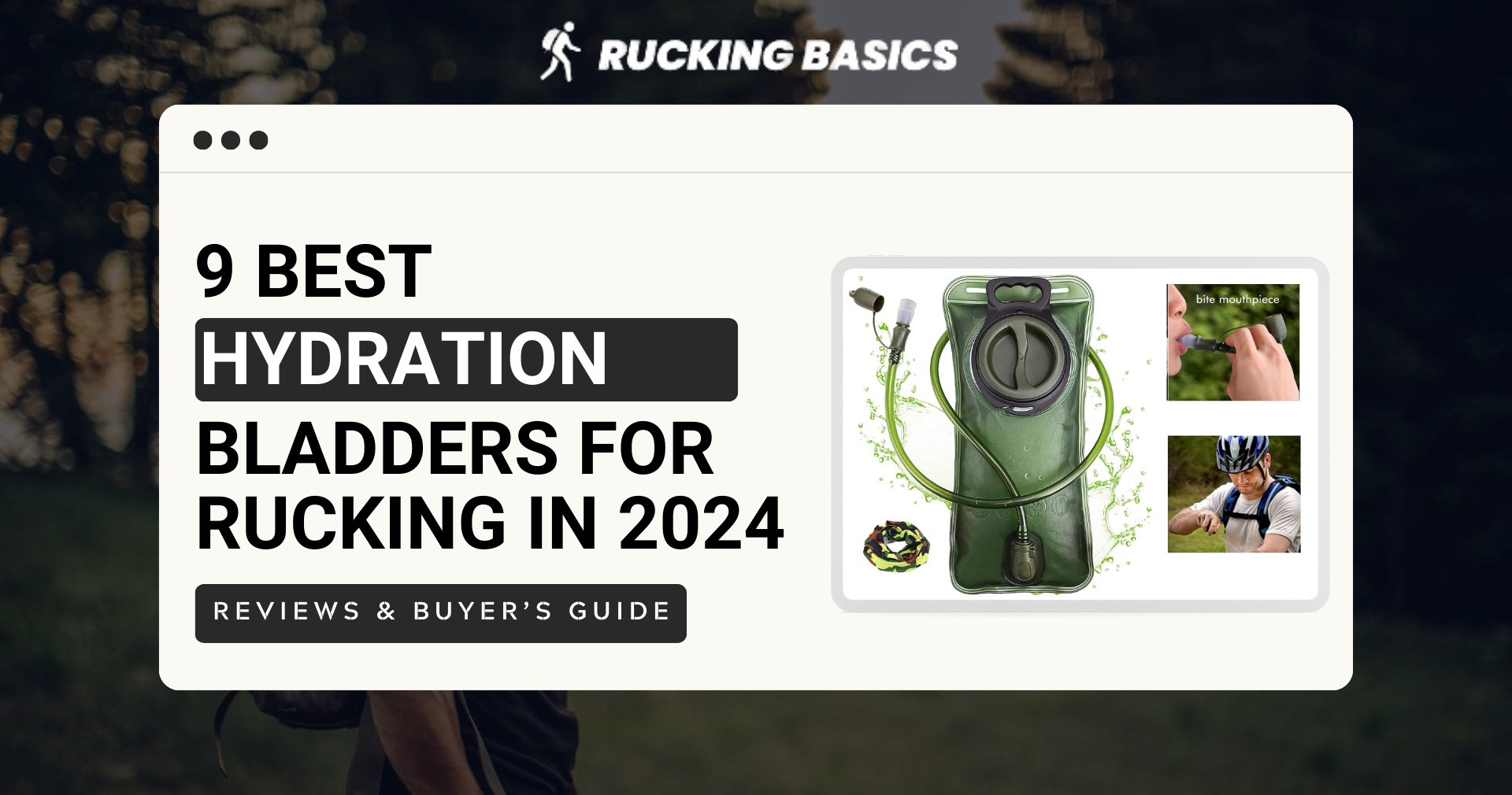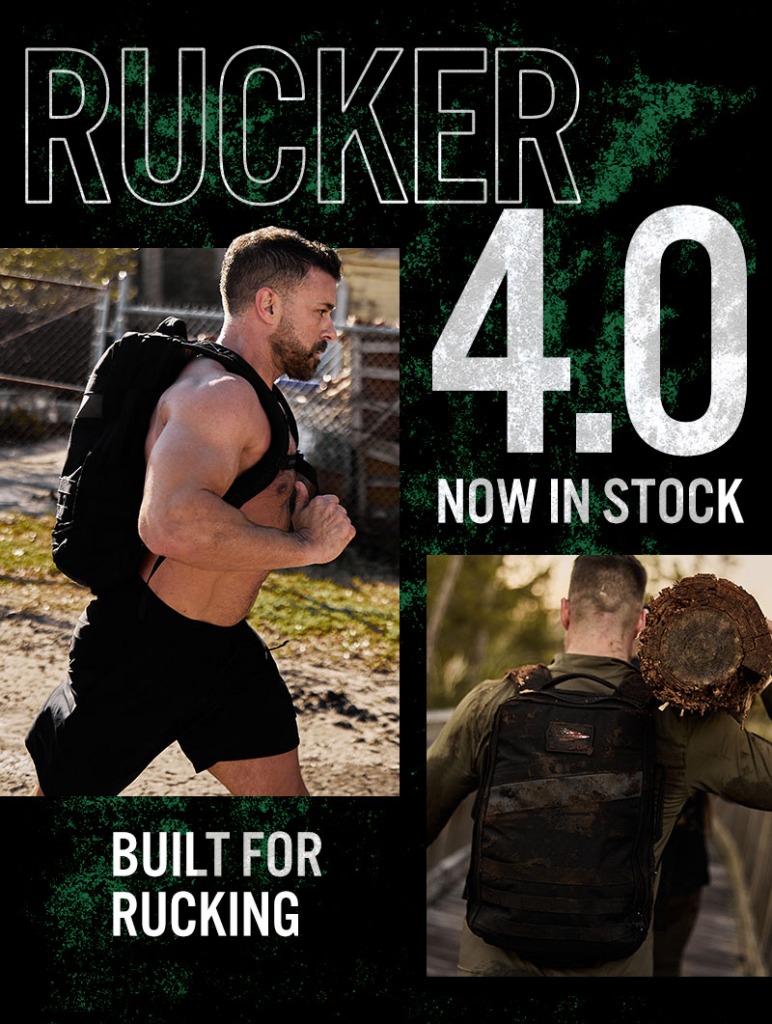In the world of outdoor adventures, two activities stand out for their ability to push the limits of physical endurance, bring many health benefits, and provide a sense of connection with nature: rucking and backpacking.
While both involve hiking with a loaded backpack, they are not the same. Each offers a unique experience that fits different preferences and fitness goals. With its roots deeply embedded in military training, racing is more of a fitness activity, while backpacking connects you with the wilderness.
Let’s find out more about these two fantastic activities and discover which one is the perfect fit for you.
Rucking 101
I know you know what rucking is in general; however, I want to tell you more details so that it is easier to distinguish it from backpacking and hiking.
Rucking is created to be another practical part of military training. It’s not something new because certain forms of rucking were present even during the Roman Empire, so it serves as a testament to the resilience of soldiers throughout history. Originating as a means to toughen Army special forces and build endurance, nowadays, it has become a beloved fitness activity practiced by civilians, including athletes, worldwide.
My favorite thing about rucking is the combination of simplicity and efficiency. The age-old practice of walking long distances with a weighted backpack is 100% straightforward, yet you can transform your body and mind that way.
Whether going around urban landscapes or venturing into the heart of nature, the essence of rucking is to cover the distance with a steady cadence, often in the company of like-minded people who share a common goal.
Backpacking 101
It’s impossible to even track when backpacking first appeared in human history because this activity is related to humans’ innate connection to nature, making it more than just an ordinary outdoor activity.
The origins of backpacking can be traced to the nomadic traditions of ancient civilizations. Today, backpacking is the most popular outdoor activity, or rather adventure.
One of the defining elements of backpacking is its simplicity. Backpackers carry with them only the essentials – a rucksack with camping gear, clothes, and supplies. Whether pitching a tent under a canopy of stars or cooking meals over an open campfire, backpacking offers a rare opportunity to disconnect from the chaos of modern life and reconnect with nature.
Many use backpacking as a gateway and opportunity to think more deeply about themselves and the world around us.
Comparing Rucking and Backpacking
They share many benefits and features, but they also have differences. Now, it’s time to discover both.
Similarities
Certainly, the main similarity is that both are outdoor activities; they practically belong to the same group of activities. Also, often the same type of people enjoy both. One more thing is equipment – you can use many pieces of equipment for both, for example, high-quality footwear, backpacks, and so on.
But I wouldn’t dwell on those obvious similarities because the connection between rucking and backpacking runs deeper than just carrying a weighted backpack and going to nature. They are great for self-discovery, embracing nature, and building resilience.
Both rucking and backpacking spark personal growth. Pushing physical and mental limits leads to moments of doubt and discomfort. Yet, overcoming challenges fuels growth, revealing hidden potential. That’s true for everything in life; just remember the last time you finished an arduous task. You were very proud of yourself after that.
Moreover, both activities offer unparalleled opportunities for physical fitness and exploration. Trekking through forests, scaling peaks, or wandering along rivers reveals breathtaking and diverse ecosystems. These experiences enhance physical health and also nurture the soul. I often cite mental benefits as the most essential benefits of outdoor activities, even before improved endurance or cardiovascular health.
In essence, rucking and backpacking aren’t just outdoor activities – they have the potential to be transformative journeys of body, mind, and spirit. Whether you’re seeking adventure, solitude, or self-discovery, you can adjust them to get what you want. Sometimes you will like the company of large groups, and other times you will want to camp alone, it’s up to you, it’s just important to reap as many benefits as possible.
Differences
While they share a love for outdoor adventure and can be combined, people of different preferences and lifestyles usually explore one activity more.
Don’t get me wrong, I told you rucking is beneficial for the mental side as well, and that’s true, but if we compare it strictly to backpacking, rucking is all about fitness and conditioning. It’s a disciplined military workout that you can do almost anywhere, whether it’s busy city streets or rugged trails. With rucking, you control your workout, tailoring it to fit your fitness goals. Carrying a weighted backpack adds resistance and intensity. It leads to calorie-burning and helps build strength and endurance efficiently.
On the flip side, backpacking is much more about adventure and exploration, although, of course, it improves your fitness to a smaller extent, too. It’s an immersive experience that takes you beyond physical exertion. Backpackers embrace nature, delving into remote wilderness areas and diverse landscapes. Unlike rucking, backpacking requires a range of gear and careful consideration of weight distribution to ensure safety and comfort during longer expeditions. Also, it usually lasts longer because you will be camping for several days. That’s why intensity rucking and backpacking usually cannot be compared.
Rucking vs Backpacking: Pros & Cons
What I love about rucking and backpacking is that both come with many more pros than cons. Although the pros outweigh the cons, it is crucial to be aware of potential cons, just in case.
Rucking Pros and Cons
Pros
- Vigorous Daily Workouts: I like the gym, but ruck marching offers an unmatched potential full-body workout, engaging multiple muscle groups simultaneously. You will strengthen not only the lower body but also your core and upper body muscles, resulting in a comprehensive and efficient exercise session. Due to the heavy load you carry, a significant cardiovascular system adaptation occurs, bringing many health benefits.
- Minimal Equipment Required: Unlike many other fitness activities, rucking doesn’t require breaking the bank. Yes, you will have to invest in footwear, a rucking backpack or a weighted vest, and a few more basic things like ruck plate, clothes, socks, and a hydration bladder, but once you buy all that, you won’t have any more expenses later. If you’re looking for a high-quality option, check out this Centr Rucksack review. Starting rucking requires less money and preparation than backpacking, for example.
- Suitable for Various Environments: One of the most significant advantages of rucking is its versatility. Don’t have time to drive 200 miles to the forest? No problem, you can do it on a treadmill, in the local park, or wherever. Of course, it is healthier in nature, but you can always adapt and avoid missing a workout.
Cons
- Overuse Injuries: Like any form of endurance physical activity, rucking carries the risk of overuse injuries if not performed correctly. It’s very repetitive, plus you carry more than your body weight, which undoubtedly puts excessive strain on certain muscles and joints. All this increases the likelihood of injuries such as shin splints, knee pain, or lower back discomfort. (1) (2) To mitigate this risk, you must pay close attention to form, gradually increase the intensity and duration of rucking sessions. And don’t forget to incorporate rest days to allow for proper recovery. Otherwise, an injury will make you take a longer break than you would like.
Backpacking Pros and Cons
Pros
- Outdoor Experience: 99% of us don’t spend enough time in nature. Those with a backyard are in a slightly better situation, but modern man is still alienated from nature. Backpacking offers a chance to change that and experience the outdoor environment. Backpackers connect profoundly with nature, fostering a sense of awe, wonder, and appreciation for the natural world. This later affects the eco-friendly mindset when choosing many things.
- Stress Relief: Backpacking is a much-needed escape from the stresses and pressures of everyday life. We can’t avoid stress when we go to work or try to save money for a new house, but that’s why we have to find a way to relax, and backpacking is excellent. Any sports activity is also good, but it can cause you even more stress if it is competitive. In backpacking, you don’t have opponents; you enjoy simplicity and relaxation.
- Physical Benefits: We must not overlook the physical benefits. Although not a comprehensive approach to training like rucking or gym workouts, backpackers are still in better physical shape than regular people.
Cons
- Planning and Gear: From tent and sleeping bag to cooking equipment and navigation tools, backpackers must carefully plan and prepare for their expeditions. Over time, as you gain experience, it will become relatively easy, but it is still impossible to just grab a rucksack, fill it with weights, put on boots, and go on a ruck march. Backpacking requires planning.
- Time-Consuming: Backpacking is a time-intensive activity. Researching trails, securing permits, packing gear, and arranging transportation, backpackers must invest a significant amount of time and effort into each expedition, both before, during, and after.
- Greater Risk Exposure: Backpacking carries inherent risks, including exposure to extreme weather conditions, wildlife encounters, and remote or unfamiliar terrain. Unlike rucking, which can be done in urban or suburban areas with easy access to help and resources, backpackers may find themselves far from civilization, facing challenges and emergencies.
Factors Influencing Choice
The following are the main influential factors when choosing which activity to try:
- Fitness Goals and Preferences — Rucking is a far better workout regimen if your primary goal is to build strength, endurance, and cardiovascular fitness or start a weight loss. On the other hand, backpacking may be the ideal choice if you are looking for a more holistic outdoor experience that combines physical activity with long stays in nature.
- Available Time and Resources — After all, time and money will probably have a key impact on the decision, as they do on anything else in life. Rucking is a time-efficient option that can be easily integrated into a busy schedule and is budget-friendly. Backpacking requires more time and money in most cases.
- Level of Adventure — Each of us is different, and while someone feels excited before the adventure, someone else may feel fear. Rucking in nature also brings a certain level of adventure, but less than backpacking, so think about what you really want. Be honest with yourself.
Conclusion
In the debate of rucking vs backpacking, there is no definite winner. And I’m not even trying to determine a winner, because both activities are fantastic and you should include them in your life.
Each activity offers its own set of rewards and challenges for different preferences and lifestyles. Whether you seek a high-intensity workout or the tranquility of a nature retreat, they are unforgettable outdoor adventures.
Pick your boots, pack your bags, and start confidently, knowing that whichever adventure you choose, you’ll find moments of wonder, beauty, and improvement along the way.
Frequently Asked Questions
Is rucking suitable for beginners, or is it better suited for experienced hikers?
Rucking may seem like an advanced activity, but it is also suitable for beginners due to the possibility of adjusting weight, duration, intensity, and everything else. Beginners can start with lighter weights and shorter distances to gradually build strength and endurance. Meanwhile, experienced hikers can use rucking to add intensity to their training regimen or as a new challenge.
What are the best practices for selecting the right weight for a rucking session?
As a general rule, aim for a challenging but manageable weight, typically around 10-30% of your body weight. Remember to consider terrain, distance, and your fitness level when selecting the appropriate weight for each session. Check our guide to find out every detail about choosing the rucking weight.
How do elevation and altitude affect rucking performance and difficulty?
You probably know that athletes have a hard time playing against teams from Denver. As you ascend to higher altitudes, the air becomes thinner, making it harder to breathe and exert yourself. This can result in increased fatigue and decreased performance. Additionally, steep inclines and uneven terrain at higher elevations can add an extra challenge to your rucking workout. It is essential to acclimate slowly to higher altitudes and adjust your pace.
What are the main differences in gear requirements between rucking and backpacking?
Rucking requires a sturdy backpack, weight plates or sandbags, and proper footwear. On the other hand, backpacking necessitates a broader range of gear, including tents, sleeping bags, cooking equipment, and navigation tools.
Can rucking be integrated into a backpacking trip as a supplementary workout?
Yes, it can, and that is something I recommend. You can integrate rucking into a backpacking trip as a workout to enhance overall fitness and endurance. During rest stops or downtime at the campsite, consider going for a rucking session with your loaded backpack. That way, you will work on your fitness, and you will still be able to devote yourself fully to everything that backpacking brings.
References
- Bhusari N, Deshmukh M. Shin Splint: A Review. Cureus. 2023 Jan 18;15(1):e33905. doi: 10.7759/cureus.33905. PMID: 36819450; PMCID: PMC9937638.
- Mauck MC, Aylward AF, Barton CE, Birckhead B, Carey T, Dalton DM, Fields AJ, Fritz J, Hassett AL, Hoffmeyer A, Jones SB, McLean SA, Mehling WE, O’Neill CW, Schneider MJ, Williams DA, Zheng P, Wasan AD. Evidence-based interventions to treat chronic low back pain: treatment selection for a personalized medicine approach. Pain Rep. 2022 Sep 30;7(5):e1019. doi: 10.1097/PR9.0000000000001019. PMID: 36203645; PMCID: PMC9529058.
